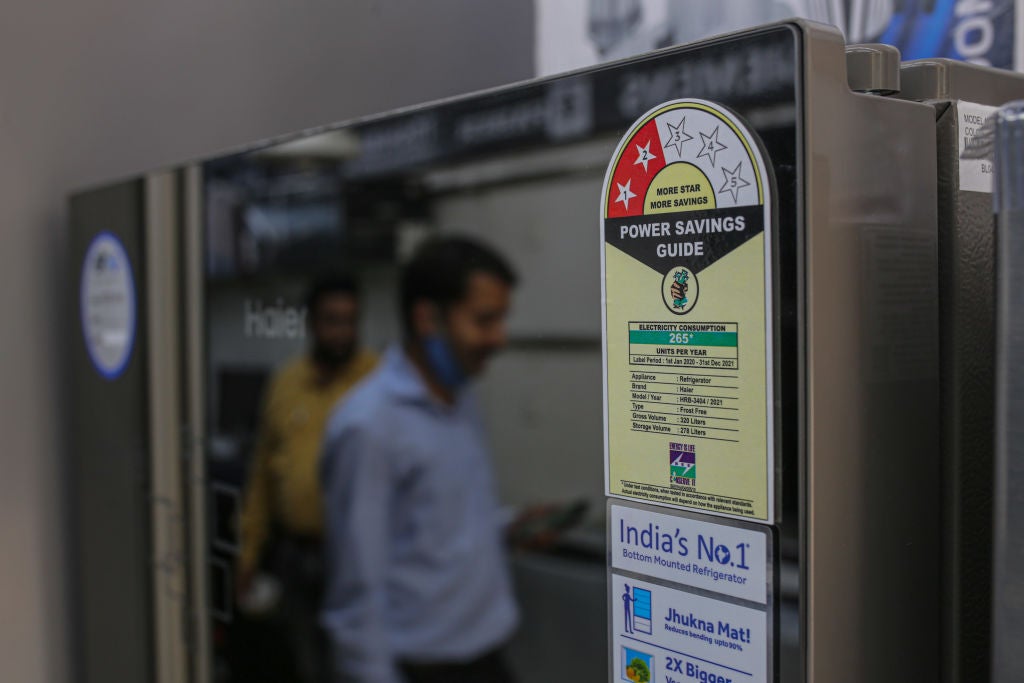
Minimum energy performance standards (MEPS) are used globally to reduce energy use, avoid greenhouse gas emissions and cut energy costs via energy-efficient appliances and equipment. For policymakers and advocates who want to leverage this highly effective tool, a common question is: “How stringent should my country’s MEPS be?”
To answer this question, analysts typically review the prices, availability and cost of operating products at different efficiency levels. It is also helpful to know how stringent standards are elsewhere, especially for globally traded products such as light bulbs. However, this information can be difficult to find.
Enter World’s Best MEPS: a new tool from CLASP, an international NGO focused on appliance and equipment energy performance and quality. CLASP compared the current MEPS for six key product categories across ten major economies.
The analysis reveals that no single country can lay claim to having the world’s best MEPS in all categories – meaning all nations, even those considered ‘leaders’, have room for higher ambition. Below we outline opportunities to raise ambition in markets around the world.
Lighting
Fluorescent lamps were once promoted as an energy-efficient alternative to incandescent and halogen lamps, and the risks associated with mercury in fluorescents were tolerated as a necessary trade-off. Today, thanks to major advances in light-emitting diode (LED) technology, mercury-free LED lamps can cost-effectively replace fluorescents in virtually all applications. LEDs also last longer than fluorescent lamps and consume 50–60% less energy.
The EU and UK have been leaders in the global movement to transition to mercury-free LED lighting, adopting technology-neutral MEPS with strict minimum efficiency requirements that effectively eliminate incandescent, halogen and fluorescent lighting from their markets. Because the MEPS are technology neutral, they apply the same efficiency rules to all lighting technologies, rather than creating separate rules for each technology (incandescent, fluorescent and LED).

US Tariffs are shifting - will you react or anticipate?
Don’t let policy changes catch you off guard. Stay proactive with real-time data and expert analysis.
By GlobalDataMany jurisdictions continue to have technology-specific rules. However, technology-specific rules do not remove inefficient technologies from the market and therefore fail to capture all cost-effective, energy-use reductions. Instead, technology-neutral rules are straightforward to implement and can level the playing field for all appliances that deliver a given service, like lighting.
While LEDs represent a substantial improvement over fluorescent lighting, even greater energy reductions are possible, due to continual improvements in LED efficiency. This is great news for governments that want to further cut the energy costs and emissions associated with lighting. For example, the US recently proposed more than doubling the minimum light bulb efficiency level for the most common bulbs to over 120 lumens/watt, a move that could cut 131 million metric tonnes of carbon dioxide over the next 30 years. It would shift the US light bulb markets decisively to more energy-efficient LEDs.
Electric motors
Electric motor-driven systems are responsible for more than 50% of global electricity use. The International Energy Agency estimates that all new industrial electric motors must be best-in-class technologies by 2035 to achieve net-zero emissions by 2050.
Fortunately for regulators, standards body the International Electrotechnical Commission has defined test methods and efficiency levels of increasing stringency (IE1, IE2, IE3 and so on) that governments can use to regulate the energy performance of the most common types of motors. Several major markets around the world have adopted MEPS at IE3. In July 2023, the EU and UK will be the first to increase their MEPS to IE4 for some motors.
IE3 represents the floor for the efficiency of new motors across several jurisdictions, including Brazil, Canada, China, the EU, Japan, UK and US, placing these economies at the top of our best-in-class MEPS for motors analysis. (Those with MEPS for motor-driven applications received an additional 0.5 points in our comparison.)
Based on these findings, countries looking to ramp up their motor MEPS can leverage IE3 MEPS to reach net-zero emissions by 2050. Once a regulatory framework for motors is established, governments can achieve additional energy savings by setting standards for motor-driven applications such as fans, pumps and compressors, as well as requiring the use of controls like variable speed drives. Five of the ten major economies whose MEPS CLASP analysed had adopted MEPS for one or more of these motor-driven applications (in addition to having MEPS for the motors themselves).
Air conditioners
Air conditioners are responsible for a large and growing share of electricity consumption, especially across the Global South.
China has the most stringent MEPS for room air conditioners, but many other countries follow closely behind. CLASP compared MEPS levels for non-ducted room air conditioners with a two-tonne cooling capacity. Given that approximately 70–80% of the room air conditioners sold around the world are produced in China, more stringent standards elsewhere are feasible and cost-justified wherever there is significant demand for space cooling.
Conclusion
The leaders highlighted above illustrate that more stringent MEPS – and the resultant economic and environmental benefits – are within reach. World’s Best MEPS identifies some of the best opportunities available to regulators today to further increase appliance energy efficiency, reduce emissions and cut energy costs for consumers.
Author's note: Visit World’s Best MEPS for more detail on the three end uses highlighted here, plus a comparison of policies for refrigerators, water heaters and space heating equipment. For additional guidance on appliance policies, see the model regulation guidelines published by United for Efficiency.





